David Dye's Blog, page 15
October 14, 2024
10 Mistakes Executive Teams Make When Building Workplace Culture
So, you’re ready to build a stronger workplace culture. You want your executive team energized, engaged, and doing work that matters. Maybe you’ve even rolled out a few new initiatives, held a town hall, or added some fun team-building or perks. That’s a good start.
But here’s the thing: Shaping culture is like crafting a story. If the main characters (your leaders) are poorly developed or behave unpredictably, the story won’t hold up no matter how compelling the plot.
10 Mistakes to Avoid When Working on Workplace Culture (and what to do instead)We’ve seen it happen so often—a leadership team pours time and resources into “fixing culture” only to wind up with employees rolling their eyes.
If you’re making one (or more) of these common mistakes, you inadvertently undermine the culture you want to create.
Let’s talk about what NOT to do when building workplace culture, and more importantly, what you can do instead.
1. Outsourcing Culture to HR (or to consultants)Don’t get us wrong. Your HR team should be vital strategic partners in building your HR strategy. I (Karin) spent years in HR at Verizon leading successful culture initiatives. And of course, we know the value consultants can provide.
We would love to partner with you and your executive team to build a practical plan for a high-performing, human-centered culture (it’s what we do best).
But, when executives treat culture as something HR or a “vendor” owns (ask us how much we hate that word ;-), it sends the message that culture is a “nice-to-have” and not a business priority.
Culture comes from the top. Your team will only care as much as you do.
What to do instead: Partner with HR (and maybe even us ;-), to make sure you’re leading the charge, modeling the habits, and visibly owning culture initiatives.
See Also: Leaders Coaching Leaders: How Leadership Development Leads to Sustained Culture Change
2. Talking About Values but Not Modeling the ValuesIf we had a kombucha for every time a team told us they’re “human-centered,” but then leaders consistently reward results over relationships…
When your words don’t match your actions, people notice. And they stop trusting you.
What to do instead: Translate your values into actionable, measurable habits. Ensure every executive team member team has a practical plan to model, communicate, and build a cadence of accountability and celebration around those habits.
The best way to prevent this mistake is to ensure every member of your executive team can translate your organization’s values into concrete, observable habits and behaviors. This will probably come more naturally for some of your executive team than others, so rather than just talking about your values, bring your executive team together and give them a chance to share exactly how they model the values through visible, concrete actions.
When you see your executive team modeling the behaviors (and developing them in others), thank them. Ensure that they notice you noticing. Encourage them to notice and celebrate the habits and behaviors in one another (and to hold one another accountable when they don’t).
3. Failing to Involve the Broader Team in Decision-MakingYes. You need your executive team to own the culture. But, if employees don’t participate and share their ideas, they won’t have ownership and will be less invested.
What to do instead: Ask for input early and often. Use skip-level meetings, focus groups, or go for a walk-and-talk with your team. Ensure people feel heard, and they’ll be more likely to champion the vision – because now it’s their vision too.
A few of our favorite ways to do this is through a SynergySprint, where teams align on the critical habits needed to build their desired workplace culture and build practical plans and skills to achieve it.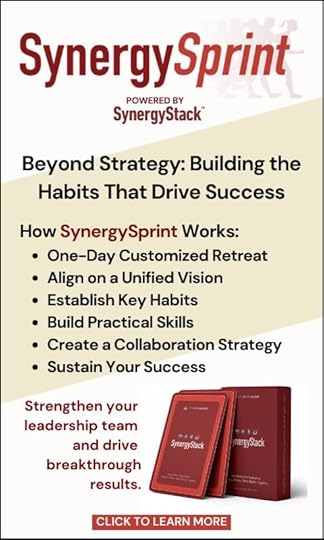
Your front-line managers are your culture carriers. If they don’t see the big picture, lack communication skills, or are frustrated and overwhelmed, they won’t reinforce the habits you need for lasting culture change.
What to do instead: Train and empower your managers with practical leadership techniques and communication skills. Give them the tools and training they need to be confident culture advocates. And check in with them frequently to see where they need support.
5. Overloading Employees with InitiativesYou want change, fast. And all the initiatives seem like good ones. But, suddenly, everyone’s in “initiative fatigue,” and nothing sticks.
What to do instead: Prioritize a few specific habits that will make the biggest difference—and build tight, integrated plans on embedding those in every area of your culture.
Build a 5×5 communication plan for your executive team to connect what they are asking employees to do and why. Check for understanding to ensure everyone truly understands the habits that matter most. Ensure your leadership team models the behavior every day. Daily actions and accountability will be more effective than complex plans that feel disconnected from other strategic priorities.
6. Prioritizing Perks Over PurposeEverybody likes free snacks. But, if employees feel overworked, underappreciated, or unclear on how their work contributes to something bigger, no amount of free popcorn will keep them engaged.
What to do instead: Ensure everyone understands your M.I.T. (Most Important Thing) leadership priorities, why they matter, and the initiatives, activities, and habits that align with the bigger picture.
7. Neglecting Accountability for Leadership BehaviorsEver see a high-performing leader get a pass for poor behavior because “that’s just how they are”? It’s toxic. If people feel like there’s one set of rules for the powerful and another for everyone else, it kills motivation and trust.
What to do instead: Hold everyone to the same standards. Leadership is about modeling the culture you want to see. Make it clear that values are non-negotiable—even for your top performers.
See Also: How to Manage a Strong, Arrogant, Maybe Even Toxic High Performer.
8. Overemphasizing Quick Wins Instead of Long-Term ChangeNow and then we get an “emergency” call from an HR manager looking for quick training because the employee engagement survey is coming out next month and the executive team is suddenly concerned.
You won’t change culture with one emergency training class. And you’ll make it worse if your HR manager opens the class by saying, “You asked for training, so here it is. Remember this when you fill out your HR pulse survey.” Most employees can smell a “ flavor of the month” initiative a mile away.
What to do instead: Balance quick wins with long-term strategies. Celebrate the small victories, but always have an eye on building systems and habits that will last.
9. Assuming Culture Will Happen ‘Naturally’It’s easy to think that if you just hire good people, they’ll naturally create a great culture. But even the best people need a clear direction and intentional leadership development.
What to do instead: Be deliberate. Define what you want your culture to be, communicate it clearly, and reinforce it every day through your actions and decisions.
10. _____________ What would you add? What are the biggest mistakes you see executive teams make with culture change?The good news? You’re already thinking about culture, which means you’re on the right track. Culture doesn’t change overnight, but with a little intention, a lot of role modeling, and a commitment to consistency, you can build a workplace culture where people want to work, grow, and give their best.
And when that happens, your people aren’t just working for you—they’re working with you to build something truly remarkable.
The post 10 Mistakes Executive Teams Make When Building Workplace Culture appeared first on Let's Grow Leaders.
October 10, 2024
How Can I Be a Better Listener (When I feel SO IMPATIENT)?
Hi Karin, I want to be a better listener. I do. But, I’m not sure it’s in my nature. I get so impatient. It’s not that I don’t care. But, I’m busy. What advice can you give me to be a better listener when I feel impatient? #AskingforaFriend
I love this candid and insightful question. And I can’t think of a better friend to ask than Michael Reddington, author of the Disciplined Listening Method.
Practical Tips For Empathetic Listening (Even When You’re Feeling Impatient)1. Take a deep breath
2. Consciously recognize that you’re the one creating your stress.
3. Focus on what you can try to achieve in the outcome.
But most importantly watch this…

Highlights from the Conversation
Don’t miss the important story at (countdown) 5:18.
(3:26) “If I’m having a conversation with you, I have to care to some degree about the OUTCOME we can achieve or the RELATIONSHIP that we have. If something is important about the outcome or the relationship, now I can stay focused. And because now I am focused on the outcome, I can stay focused to uncover hidden value. I can give myself a purpose to be in this conversation.”
(3:03) “Instead of just checking the box…
What’s the emotional connotation of the word choice?
Pay attention to what not saying.
What’s a new alternative that might be present?
How can I surprise myself here?”
Your turn.
How do you be a better listener (even when you’re feeling impatient)?
The post How Can I Be a Better Listener (When I feel SO IMPATIENT)? appeared first on Let's Grow Leaders.
How to Can I Be a Better Listener (When I feel SO IMPATIENT)?
Hi Karin, I want to be a better listener. I do. But, I’m not sure it’s in my nature. I get so impatient. It’s not that I don’t care. But, I’m busy. What advice can you give me to be a better listener when I feel impatient? #AskingforaFriend
I love this candid and insightful question. And I can’t think of a better friend to ask than Michael Reddington, author of the Disciplined Listening Method.
Practical Tips For Empathetic Listening (Even When You’re Feeling Impatient)1. Take a deep breath
2. Consciously recognize that you’re the one creating your stress.
3. Focus on what you can try to achieve in the outcome.
But most importantly watch this…

Highlights from the Conversation
Don’t miss the important story at (countdown) 5:18.
(3:26) “If I’m having a conversation with you, I have to care to some degree about the OUTCOME we can achieve or the RELATIONSHIP that we have. If something is important about the outcome or the relationship, now I can stay focused. And because now I am focused on the outcome, I can stay focused to uncover hidden value. I can give myself a purpose to be in this conversation.”
(3:03) “Instead of just checking the box…
What’s the emotional connotation of the word choice?
Pay attention to what not saying.
What’s a new alternative that might be present?
How can I surprise myself here?”
Your turn.
How do you be a better listener (even when you’re feeling impatient)?
The post How to Can I Be a Better Listener (When I feel SO IMPATIENT)? appeared first on Let's Grow Leaders.
October 4, 2024
How To Recruit Leaders In Your Volunteer Organization
You’ve seen it happen. The same dedicated people carry the load year after year while your most qualified potential leaders hide in the back, politely declining. Or you’ve got some enthusiastic volunteers who step up—but then burn out and walk away. Sound familiar? When attracting busy, talented people to lead, the secret is to start with connection, clarity, curiosity, and commitment. Whether you’re leading a volunteer group, a non-profit, or a community team, these four dimensions will help you attract and retain leaders who can keep your mission thriving.
How to Recruit Volunteer LeadersStart with storySet a rhythm of whyCommunicate opportunitiesFacilitate relationshipsCreate bite-size rolesLimit termsIdentify habits for successInventory talent and skillsInclude young people and give them powerEmpower possibilityAllow for failure and learningSchedule the finishPractice accountabilityCelebrate successLeadership is leadership—whether you work in a volunteer organization or a for-profit corporation. Same with teamwork and collaboration. And no matter where you lead, the first conversation is with yourself. If you have a poverty mentality (“I have to beg people to do this”), you can’t attract the talent you need.
Instead, you can use the four dimensions of collaboration to create a culture people want to join. With these four dimensions, you’ll attract, keep, and grow leaders in your volunteer organization.
ConnectionConnection to a purpose and people is the heart of volunteer service. To attract leaders, connect people to the mission and each other.
1. Start with StoryWhat’s at the heart of your work? That core “why” should pulse through everything you do. Condense your organization’s work to one sentence that captures what it’s all about. That inspires people to say, “Sign me up.”
Once you have that straightforward “why” spelled out, find ways to tell the story. Think of the people you serve. Tell their story. Better yet, have them tell their story.
Through story, you connect potential volunteer leaders to your values and mission. You want their heart before their time or money.
2. Set a Rhythm of WhyOne of the best volunteer leaders I (David) ever worked with started every single gathering with that one-sentence statement of purpose. “We are here to…” It didn’t matter if it was a Board meeting, a happy-hour, or a recognition celebration. He started with WHY. And every member of the organization internalized that why. It drove everything we did and attracted volunteers.
Consistently connect back your WHY to help attract potential leaders to what matters most.
3. Communicate OpportunitiesToo often, committees ask, “Who should lead this?” and limit their answers to their established connections. They overlook many qualified people because they don’t know them. Communicate opportunities to cast a broader net and connect your members to the chance to serve and lead.
4. Facilitate RelationshipsOne of the most valuable benefits of volunteer leadership are the people you meet. You can help your volunteers realize this benefit by investing in relationships. Take time for “connection before content” to help your volunteers get to know one another, understand one another’s expertise, and individual stories.
With limited time, you don’t need to invest hours—even a few minutes at the beginning of meetings for a compassionate conversation starter or SynergyStack habit discussion will help.
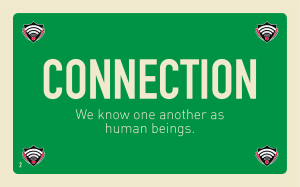
Clarity about roles, timeframes, and how to succeed is vital for successful volunteers. Invest in clarity to make leadership accessible, help potential leaders say “yes” and succeed in their work.
5. Create Bite-Size RolesWarning: this will annoy the guy who did the whole job for the last 20 years. You’ll need to politely tell him to chill. He needs relief, and it’s a new day.
Consider breaking the bigger jobs down into something a strong leader with an already booked life could imagine herself doing. As they grow into a bigger role, they may take on more responsibility.
But make that first “yes” as manageable as possible.
6. Limit TermsIt’s easy to rely on the same people to do the same thing year after year. The shoes become too big to fill, and the unintended side effect is intimidation … not to mention stagnation. Plus, knowing there’s an exit strategy is attractive. Everyone saw how the last guy got stuck.
And, the person may want to continue their service. There will still be a place for them.
7. Identify Habits for SuccessThere are two questions every volunteer (heck every employee, leader…every team member) needs to be able to answer: 1) What does success in this role accomplish? 2) How do I succeed?
Help your volunteer leaders with a clear picture of what a successful outcome achieves for the organization and the specific, observable habits that will help them have that success.
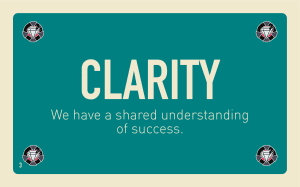
Curiosity helps you tap into the vast set of hidden talents, abilities and experiences your people bring with them. Invest in curiosity to find new people, new approaches, and help people grow in their roles.
8. Inventory Talents and SkillsYou need to know what people are eager to give. Some will be too humble to tell you. I (Karin) was directing a children’s musical at our church and was thinking I’d have to bother the usual suspects to paint the set. One of the newer members came to me with his portfolio of AMAZING art, as if he were applying for a job. I had to resist the urge to kiss this man I didn’t know. He spent countless hours creating amazing scenery.
Bottom line, we didn’t know and we never would have asked.
9. Include Young People & Give Them PowerKids have enormous leadership potential. If you have young people in your organization, scaffold them gently and take some risks. Our teenagers would get so annoyed when adults try to micro-manage their leadership efforts. They’ve got it. Give kids room and watch the magic. Then you can gently coach and help them grow as they run into challenges.
See also: Developing Leadership Skills in Children: 11 Ways to Grow Your Kids
10. Empower PossibilitySome volunteer organizations have a habit of asking someone to “lead” and then tell them exactly how it should be done. That will turn off your most creative volunteer leaders. Be willing to accept radically novel approaches and new ideas. (See Clarity above—if you define what a successful outcome does for the organization, ask them how they might get there.)
11. Allow for Failure and LearningNo one grows without taking risks and stumbling along the way. But criticism and gossip will turn away your best leaders FOREVER. They’ve got enough of that crap in their day job. Encourage, develop, and make it okay to experiment and fail forward.
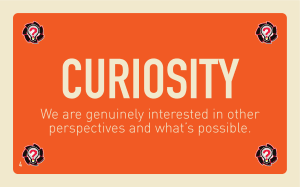
Commitment and accountability tell your volunteers that their work matters. Invest in commitment and accountability to help your volunteers feel a real sense of accomplishment as they fulfill the purpose of their work.
12. Schedule the FinishOne of the most frustrating volunteer experiences is when you work hard to meet a deadline, only to find out that no one else took the work seriously. “Why bother” sets in—and soon you’ll lose those dedicated leaders.
Promote accountability by scheduling the finish and ensuring that everyone has straightforward tasks and a specific time for the team to review progress. Discuss competing priorities to ensure the timelines are achievable.
When you schedule the finish, you bake accountability into the team’s work from the start.
13. Practice AccountabilityMany volunteer leaders struggle with accountability. They worry that accountability will drive away their precious volunteers. But it actually does the opposite. When you follow up to ensure everyone follows through, you’re telling your volunteer leaders that you value their work and their time.
Their work matters and they can trust on one another to get it done. Human-centered accountability builds trust and morale as your volunteer team sees the results of their work.
(If you need tools to help you have a human-centered accountability conversation, check out our INSPIRE Method.)
14. Celebrate SuccessYour volunteer leaders have contributed their time, creativity, and energy. It’s time to celebrate! Acknowledge what they and their teams have done. Celebrate the progress and achievements. You get more of what you celebrate and encourage, but less of what you criticize and ignore. So if you want more leaders, celebrate them. You will lay the groundwork to attract the next generation of volunteer leaders.
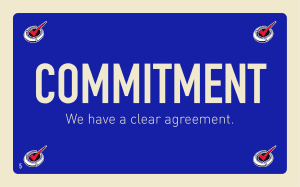
The four dimensions of connection, clarity, curiosity, and commitment will help you attract and grow volunteer leaders—and help your volunteer teams collaborate.
And if you could use a tool to help you build effective teams built on these four dimensions, check out the SynergyStack System. It’s got everything you need to help you accelerate performance, build collaboration, and reduce stress.
Now it’s your turn. We would love to hear from you. What is one of your most effective ways to attract volunteer leaders?
Note: This article was originally written in 2014. With the need for effective volunteer leaders as great as ever, we’ve revised and republished the article—so you will see comments from the original.
 You Might Also Like:How to Lead When Your Employees Don’t Have to FollowOne Surprising Reason Your Nonprofit Struggles to GrowBoost Productivity with a Human-Centered Culture
You Might Also Like:How to Lead When Your Employees Don’t Have to FollowOne Surprising Reason Your Nonprofit Struggles to GrowBoost Productivity with a Human-Centered CultureThe post How To Recruit Leaders In Your Volunteer Organization appeared first on Let's Grow Leaders.
Ready for a Success Boost? The Key to Peak Performance
Episode 274: Are you tired of feeling overwhelmed by burnout and looking for a success boost in your leadership role? What if you could achieve your goals without sacrificing your well-being? In this episode of Leadership Without Losing Your Soul, host David Dye and guest Chazz Scott discuss the powerful ways leaders can transcend negative thinking, regain focus, and build stronger relationships. Whether you’re leading a team or looking to better manage your personal well-being, these tools will help you create lasting success without burning out.
Here’s what you’ll gain from listening:
Practical strategies for fighting burnout and achieving sustainable success through “radical self-care”Insights on how daily habits can transform both your professional and personal lifeSimple, actionable tips to boost focus and confidence as a leaderStart transforming your leadership and personal well-being today—hit play and discover how small changes can lead to big results!
Introduction to Radical Self-Care for a Success Boost[00:26] – Welcome to Leadership Without Losing Your Soul
David Dye opens the episode, introducing practical leadership tools designed to help you achieve a success boost by transforming your thinking, increasing focus, and improving relationships—all while maintaining your well-being.
[01:21] – Meet Chaz Scott: Author and Resilience Coach
Chazz Scott, author of Success Starts Within, shares his journey to helping leaders and high performers. He’s here to show you how radical self-care can deliver the success boost you need, especially in high-pressure environments.
[02:03] – Chaz’s Early Leadership Lessons
Chazz recounts his early days as a cyber defense engineer, where he was thrown into leadership. He learned that taking care of yourself is not only critical for your own success boost but also for the well-being of your team.
[04:24] – Bridging Wellness and Achievement
The conversation shifts to Chazz’s book, Success Starts Within, which highlights the importance of mental and physical wellness as foundational to outward success. This wellness-driven approach can give you a lasting success boost, helping you thrive personally and professionally.
[06:25] – Personal Story: Burnout and Radical Self-Care
Chazz reflects on his personal story of burnout in 2017, despite outward success. His realization? Success starts within. Simple changes, like establishing a morning routine, provided a crucial success boost by improving his internal well-being.
[09:43] – The Power of Morning Routines
Morning routines are highlighted as one of the most effective ways to kick-start your day with a success boost. By working out, meditating, or reading, you can significantly reduce stress and prime yourself for peak performance.
[12:16] – Tools to Avoid Burnout
When life gets out of balance, having self-care tools in place is essential. Chazz emphasizes the importance of having practices to fall back on, like meditation and exercise, which give you the strength to reset and maintain your success boost.
[19:06] – Guarding Your Mind for a Success Boost
Chazz discusses guarding your mind from negative influences, especially first thing in the morning. He recommends avoiding your phone or negative news and focusing instead on activities that promote a positive mindset—setting yourself up for a success boost right from the start.
[23:53] – Slowing Down to Speed Up Productivity
Chazz explains that sometimes slowing down and taking a moment to reflect can actually give you a success boost. Simple actions, like taking a midday walk or reflecting on your top three priorities, can clear your mind and increase your efficiency.
[36:54] – Disrupt and Affirm: Shifting Negative Self-Talk
Chazz introduces the “Disrupt and Affirm” method to help you overcome negative self-talk and give yourself a success boost. By recognizing and disrupting negative thoughts, and then affirming your ability to seek resources, you can reframe challenges and approach them with renewed confidence.
The post Ready for a Success Boost? The Key to Peak Performance appeared first on Let's Grow Leaders.
October 2, 2024
What Do You Like Most About Your Job? (With Video)
Start by identifying what you like most about your job
What do you like most about your job? When you reflect on your career (so far) what’s the highlight reel? What are you most PROUD of in your leadership? What brings you JOY?
There are so many good reasons to reflect on this question.
First, when you’re stressed, under pressure, or things just aren’t going your way, asking yourself “What do I like most about my job,” can be incredibly grounding.
It’s also a great interview question (to ask or be prepared to answer). I almost always ask people I’m interviewing about what they like most (and least about their current job), and what they’re most proud of when they reflect on their career.
What’s in your Leadership Highlight Reel?I recently stumbled on one of my first media interviews in 2013 when I was wrapping up a two-decade career at Verizon and launching Let’s Grow Leaders.
I was honored with Liz Wiseman’s Multiplier of the Year award (so they sent a film crew to my house to ask a few provocative questions). So exciting!
Nearly a dozen years later, I’m struck by my answer to this question.
“When you look back at your career at Verizon, what is the highlight reel?”
What strikes me watching my younger, less wrinkly, shorter-haired, self answer that question….
My answer would still be the same.
Growing Leaders.

(I guess that might have something to do with what I named my company 😉 It’s a quick video if you want the fuller answer.
For more about my journey from Verizon Executive to CEO to growing leaders around the world, you might be interested in these articles.
Succeeding as an Entrepreneur: Lessons Learned from My First 9 Months
Our About Page (Which includes our love story)
And as the story continues, my 2024 Global Speaking Reel.
How to Answer, “What Do You Like Most About Your Job” in a Job InterviewIt’s interesting. If you Google this question, here’s one of the answers you’ll receive.
“Focus on the work rather than the people”
Ideally, focus on your work and the role rather than the people with whom you work. Use the opportunity to highlight your responsibilities, different aspects of the job, and the skills you use to complete tasks. It’s an opportunity to emphasize specific job-related achievements. For example:“I really enjoy interacting with the different customers and knowing I’m having a positive impact on their buying experience. This is an aspect that I’ve focused on, and, as a result, I was the top customer service representative last year. I’m proud of the communication skills I’ve developed over my time in the role, and the fact that I’m more outgoing and confident than when I first started in the role.”
I disagree. Here’s why.
Sure, I’d like to hear about what makes you a rock star in your role. But you know what else I care about? How do you collaborate with others, particularly under pressure? Tell me what was great about the team, and your role in fostering productive collaboration. Tell me a about a time you overcame a conflict and what you learned. Talk about how your team works together to solve better problems and share ideas.
I’d hire a great collaborator over a lone wolf any day.
Your turn. What do you like most about YOUR job?When YOU think back on your career (so far), if you had to pick one theme, what is it? What makes you proud and happy about your leadership?
What would you name your leadership highlight reel?
The post What Do You Like Most About Your Job? (With Video) appeared first on Let's Grow Leaders.
September 30, 2024
How to Build High-Performing Teams: Help Your Team Thrive Under Pressure
Your team’s under pressure to perform—fast. The stakes are high, the deadline looms, and emotions are running hotter by the minute. Just last week, your team was cruising along. They weren’t going to win any high-performing team awards, but things were working well enough. Sure, there were a few bumps in communication, and collaboration wasn’t always seamless, but nothing too disruptive.
Then, then the tornado hit.
Suddenly, everything feels like it’s unraveling. Casual conversations have transformed into tense exchanges, misunderstandings are piling up, and people are tripping over one another.
And, of course, it’s happening just when you need everyone at their best—focused, fast, and flawless. But instead of smooth execution, you’re dealing with constant rework and rising frustration.
Under stress, people move fast—but not always in the same direction, and certainly not with the same level of clarity.
So, what do you do when cracks start to show under the weight of tight deadlines and high expectations? How do you prevent the stress from spiraling into mistakes, drama, or even burnout?
Pressure doesn’t have to lead to panic—it can lead to progress. Let’s explore four dimensions of collaboration and a few of the habits that help your team not just survive pressure, but thrive.
4 Dimensions of Collaboration in High-Performing TeamsConnection: Do We Know One Another as Human Beings?Clarity: Do We Have a Shared Understanding of SuccessCuriosity: Are We Genuinely Interested in One Another’s Perspectives and What’s PossibleCommitment: Do We have a Shared AgreementConnection: Do We Know Each Other as Human Beings?Under stress, personal bonds become your team’s best defense against chaos. When people know each other beyond their roles and see each other as humans with emotions, not just coworkers, collaboration becomes smoother, and misunderstandings are easier to resolve.
One habit that makes an enormous difference in high-pressure moments is “connecting with empathy.”
This means stepping back from the rush of tasks to acknowledge emotion. Imagine the impact of saying, “It looks like you’re juggling a lot—what can I do to lighten your load?” This small act of empathy shows you care about more than just the work. It shows you value your teammate as a person, which helps build trust when things feel uncertain.
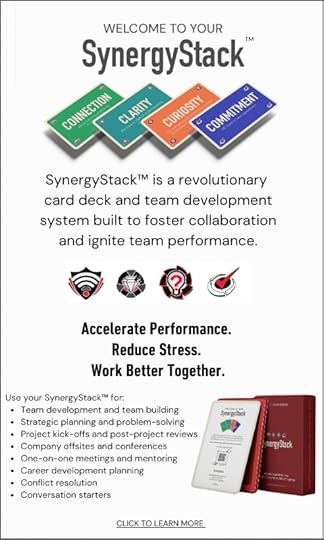 Another powerful habit is “knowing each other beyond work.” High-performing teams build their performance through small moments of connection.
Another powerful habit is “knowing each other beyond work.” High-performing teams build their performance through small moments of connection.
Asking about someone’s weekend and then asking a great follow-up question create personal bonds that matter, especially during stressful times. When pressure mounts, these casual connections remind people they’re part of a supportive team.
Powerful Phrases for Creating Human Connection in High-Performing TeamsUse simple but meaningful phrases like, “Tell me more” to encourage open dialogue. Or “We’re in this together, and I know we’ll find a way” to reinforce unity and support. When emotions run high, words that reflect empathy and connection help refocus the team on their shared purpose.
When your team feels truly connected, they’re more likely to stick together and help each other out, no matter how intense the pressure gets.
Clarity: Do We Have a Shared Understanding of Success?In high-pressure situations with tight deadlines, clarity drives success. Without it, even the best teams lose focus, wasting time on miscommunication and misunderstandings. To succeed under stress, be sure you’ve clearly defined success and the habits to achieve it.
One crucial habit is “checking for understanding.”
You’ve certainly experienced leaving a meeting thinking everyone’s on the same page, only to find out later that wasn’t the case. In high-pressure environments, miscommunication is costly.
A quick check like, “I’m hearing that we’ve agreed to __. Is that your understanding?” may seem small, but it prevents major problems later. This habit keeps everyone aligned, especially when things are changing fast.
Finally, don’t underestimate “communicating consistently.” When the world feels chaotic, key messages can easily get lost. Reinforce essential information across multiple channels—emails, meetings, and team chats—to ensure your message sticks. Consistent communication keeps your team grounded, no matter how unpredictable things get.
If you’re working on clarity, you won’t want to miss our article on getting beyond “Magical Thinking.”
Powerful Phrases to Create Better Clarity in High-Performing TeamsAsk: “What would a successful outcome do for you?”
This powerful phrase helps teams align on success criteria and go a level deeper and talk about personal motivations and desires.
To confirm understanding, say, “What I’m hearing is __. Do I have that right?” This simple check can save your team from countless headaches caused by miscommunication.
When everyone is clear on the goal and aligned on the path, pressure doesn’t feel as overwhelming. Instead, it becomes a motivator, driving the team toward shared success with precision and confidence.
More on our G.O.A.T. (greatest of all time) powerful phrases here.
Curiosity: Are We Genuinely Interested in Each Other’s Perspectives and What’s Possible?One of the best ways to foster curiosity is by “inviting diverse perspectives.” When things are feeling intense, asking, “What’s another way we could approach this problem?” invites your team to think outside the box. You’ll get multiple viewpoints, foster creativity, and remind your team that everyone’s input matters—especially when the pressure’s on.
Another great habit is “challenging assumptions.” In uncertain times, it’s crucial to think creatively. Encourage your team to ask deeper questions like, “How would we handle this if our budget got cut in half?” You’ll force the team to think creatively and explore new solutions when the usual approaches aren’t available.
Also, don’t forget to encourage people to “change their minds” when needed. During uncertainty, flexibility is a superpower. A team that’s willing to adapt to new information and perspectives will be better equipped to navigate challenges and embrace whatever comes next.
Powerful Phrases to Cultivate Curiosity for a More Creative TeamUse, “I’m curious how this looks from your perspective,” to invite input. Or ask, “What’s one thing we haven’t considered yet?” to encourage exploration beyond the obvious.
If you want more remarkable, usable ideas from your team, you won’t want to miss Karin’s TEDx The Secret to Getting More Remarkable Ideas You Can Actually Use
Commitment: Do We Have a Clear Agreement?In high-performing teams, commitment goes beyond agreeing in meetings. It’s about accountability, follow-through, and ensuring everyone is invested in the team’s success. When the pressure’s on, commitment becomes even more important. A truly committed team doesn’t just talk—they act, even when things are changing fast.
Commitment means everyone knows their responsibilities and is ready to deliver, no matter how tough things get. One key question to ask is: “Do we have a clear agreement?” Strong commitment keeps the team in sync, holding each other accountable.
One vital habit is “scheduling the finish.” Don’t just assign tasks—set clear finish lines, follow-ups, and discuss competing priorities. For example, “Let’s check back next Friday to see our progress – can we get do these first three steps by then?” This keeps commitments from getting lost and ensures results, even as priorities shift.
Finally, don’t forget to “celebrate success.” In uncertain times, morale can dip. Recognize progress, no matter how small. Saying, “Great job on this phase—let’s build on that momentum!” reminds the team their efforts matter. Celebrating small wins keeps energy high and reinforces commitment to the team’s goals.
For more Commitment Habits See: Create Commitment: 12 Habits that Build Agreement and Accountability
Powerful Phrases to Strengthen Team AccountabilityUse, “What’s one action we can both agree to as a next step?” to make sure there’s alignment and clarity on commitments. To keep accountability high, say, “Let’s schedule a follow-up to see how this is working,” ensuring that progress doesn’t slip through the cracks, even when uncertainty challenges the team’s focus.
By building and reinforcing commitment, you help your team stay grounded in action. They’ll not only know what’s expected—they’ll feel a shared sense of responsibility to deliver, even when external pressures rise. When commitment becomes a habit, your team turns intention into impact, making progress even when the going gets tough.
For more Powerful Phrases, check out our new book: Powerful Phrases for Dealing with Workplace Conflict (Free Sample Chapters).
Better Habits: The Secret of High-Performing TeamsBuilding a high-performing team in challenging times isn’t just about getting through the stress—it’s about thriving in it. By intentionally focusing on connection, clarity, curiosity, and commitment, you’re laying the groundwork for a team that doesn’t just survive uncertainty but grows stronger because of it. These four dimensions of collaboration are your team’s foundation for navigating conflict, overcoming obstacles, and finding creative solutions when the pressure is on.
The good news? You don’t have to wait for the perfect conditions to build this kind of team. By adopting these habits and using powerful phrases in your everyday interactions, you’ll see a shift. Little by little, your team’s performance will rise, their collaboration will increase, and you’ll notice that even when the world outside feels unpredictable, your team is steady, confident, and ready for anything.
With each step you take to strengthen these habits, you’re creating a team that isn’t just prepared for the pressure—they’re ready to excel in it. So no matter what challenges come your way, you can trust that your team will come out stronger on the other side.
The post How to Build High-Performing Teams: Help Your Team Thrive Under Pressure appeared first on Let's Grow Leaders.
September 27, 2024
Human-Centered Leadership Through Open Communication in the Workplace
Are you leading in a way that taps into your team’s potential for innovation, engagement, and open communication, or are you inadvertently stifling it? In today’s episode, Drew Jones, PhD, discusses how traditional management techniques often shut down culture and engagement from the start. With a focus on anthropology, Drew explains how you can create a work environment where employees thrive by sharing knowledge, taking risks, and holding themselves accountable—without the fear of failure.
By listening to this episode, you will:
Learn how to create the conditions for employees to engage, innovate, and grow naturally.Discover the science behind building a more open, trust-filled culture that encourages peer-to-peer accountability.Find out how leading with empathy and listening can unlock more potential in your team.Hit play now to learn how to cultivate a culture that drives engagement, innovation, and accountability—starting today!
Why Traditional Management Stifles Growth[00:00] – Unlocking Human Potential
Learn how fostering peer-to-peer communication, experiments, and risk-taking in a safe environment helps your team do what humans naturally do—innovate and grow.
[02:08] – Leading Without Losing Your Soul
Discover how Drew Jones’ anthropology background shapes his approach to leadership and how it can help you create a work culture where open communication thrives.
[03:37] – Early Leadership Lessons
Drew shares his first experience leading as a tennis coach at 12 years old, highlighting how empathy and communication are the core skills of effective leadership.
[05:36] – Anthropology Meets Business Culture
Drew introduces the idea that humans are wired for culture and learning from others. He explains how open communication is the key to creating a collaborative workplace that adapts and thrives.
[09:08] – The Hidden Flaws of Culture Programs
Ever wondered why so many corporate culture programs fail? Drew explains that focusing on values alone isn’t enough. It’s about building a culture of open communication and trust where employees can freely share ideas.
[11:17] – Creating Conditions for Success
Instead of trying to engineer a specific culture, focus on creating conditions where employees can communicate openly, take small risks, and disagree when necessary without fear of punishment.
[13:59] – Every Team Has a Culture
Whether or not you’re intentional about it, your team already has a culture. Your job is to ensure it’s a culture of open communication that drives innovation and engagement.
[18:48] – Learning and Adapting Together
Drew explains that successful organizations foster a collective capacity to innovate and learn. Encouraging open communication at all levels allows employees to share emerging knowledge and adapt quickly.
[22:47] – Why Employees Need to Know Strategy
You can’t expect employees to think strategically if they don’t have access to information. Building a culture of open communication ensures that everyone is aligned with the company’s goals.
[33:27] – Self-Organizing Teams
Discover how self-organizing teams can hold each other accountable through peer-to-peer feedback and open communication, empowering employees to lead projects and make decisions.
The post Human-Centered Leadership Through Open Communication in the Workplace appeared first on Let's Grow Leaders.
September 23, 2024
How to Improve Your Professional Brand at Work
Imagine a giant billboard on the side of the highway, broadcasting how you show up at work. What would it say? How would others describe your professional brand in one or two sentences? Would there be any “buts” in that description?
“She’s smart, but doesn’t follow through.” “He’s our best salesperson, but he’s a jerk with internal partners.” “They meet deadlines, but I wish they were better at problem-solving.” “She has great ideas, but doesn’t always execute.”
When it comes to managing your professional brand, the “buts” matter. You may be doing all the hard work, but if there’s a lingering “but” in how people describe you, it could be holding you back.
Defining Your Professional Brand: No More “Buts”If the work you’ve put into improving your “but” isn’t yielding the results you hoped for, it’s time to take a step back and address the perceptions that others have about you. Start by defining your aspirational professional brand.
Complete this sentence: “I want to be known for…” or “I want to be remembered as a teammate who…”
This exercise will give you clarity on how you want to show up in the workplace. Once you’re clear, it’s time to get some honest feedback.
Want the Truth? Go on a Listening TourOne of the most powerful exercises in our leadership development programs is encouraging leaders to go on a listening tour, what we call a DIY 360. This involves asking a few trusted colleagues for honest feedback on what’s working well and where you could improve.
You can do the same. Choose one aspect of your professional brand where you’d like feedback and craft a few open-ended questions. For example:
“When you think about our work together, what are two or three words you’d use to describe me?”“What is one element of my professional style that positively impacts our team?”“If you could suggest one way for me to show up differently, what would it be?”By gathering these diverse perspectives, you’ll gain insight into any “buts” you may need to address.
Let People Know What You’re Working OnOnce you’ve gathered feedback and identified areas for improvement, it’s important to let others know what you’re working on and why. Changing perceptions takes time, but when people are aware of your goals, they’re more likely to notice your positive changes.
Consistency is key. Show your colleagues that you’re actively working on improving your professional brand.
Own Your Mistakes and Keep GoingNo one gets everything right all the time. While you’re working on improving your brand, old habits may slip back in. If that happens, the best thing you can do is acknowledge it.
A simple “I’m sorry, I screwed this up” goes a long way toward building trust and credibility. Don’t hide from your mistakes or pretend they didn’t happen. Your teammates will notice, and it’s far more powerful to own up to them.
Finally, don’t give up. Improving your professional brand takes time and effort. Stay focused on consistently doing the right thing, and over time, those “buts” will disappear.
For more on building your professional brand, you won’t want to miss our recent interview with Marshall Goldsmith.
The post How to Improve Your Professional Brand at Work appeared first on Let's Grow Leaders.
September 20, 2024
How to Stop Destructive Workplace Competition (Asking For a Friend)
into healthy collaboration.
What do you do when two of your (high-performing, high-potential direct reports) don’t get along because they’re competing for your job? This workplace competition is off the chain. #askingforafriend
Hi Karin,
The good news is that I’m on the fast track and am about to be promoted.
The bad news? Two of my direct reports are jonesing for my job– and we’re in a spiral ugly workplace competition. What should I do? #askingforafriend
4 Ways to Help Your High-Performers Get Along
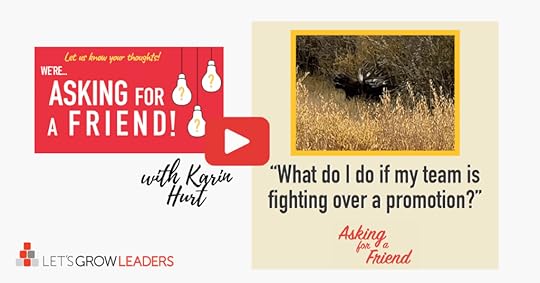
In today’s quick video, I offer 4 ways to nip destructive workplace competition in the bud.
1. Take a hard look at your systems and processes.Are results stack ranked? If one person wins, does the other lose?
For more on the importance of systems and processes and destructive workplace competition, you won’t want to miss my Asking for a Friend interview with the grandfather of workplace conflict research, Ralph Kilmann.
2. Set clear expectations.Ensure they know what good collaboration looks like. AND that you expect them to collaborate in their current role. Be sure that collaboration skills will be considered in future promotions.
You might even share a strategic story about how you learned the importance of peer collaboration the hard way. Be specific. Give examples of when collaboration is working and where it breaks down. Be crystal clear on the habits and behaviors that are vital in their role.
3. Bring them together and have them agree to a specific, doable plan down to the behavior/habit level about how they will collaborate.Of course, our new book, Powerful Phrases for Dealing with Workplace Conflict can help them think this through. We’ve also provided discussion questions, activities, and a bunch of FREE resources in our Team Collaboration Guide.
4. Invest in one-on-one conversations with each of them to support their career development plans.Your role is not the only potential one; at best one will get promoted. Be sure they both know you care about them and their careers and want to help.
5. What would you add? ______________ How do you help stave off unhealthy workplace competition?
See Also:
7 Things Your High-Performers Want to Hear You Say
Stop Frustrating Co-Workers: Avoid These Innocent Mistakes

The post How to Stop Destructive Workplace Competition (Asking For a Friend) appeared first on Let's Grow Leaders.




